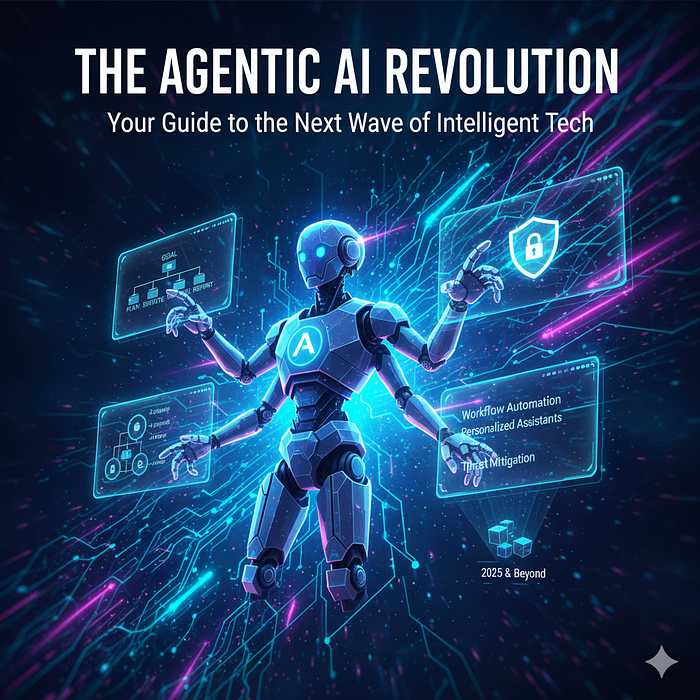The Agentic AI Revolution: Your Guide to the Next Wave of Intelligent Tech

Get Ready for AI That Acts, Not Just Answers
The world of Artificial Intelligence is moving faster than ever. We’ve mastered the art of AI that generates text and images (hello, Generative AI!). Now, the cutting edge is an entirely new paradigm: Agentic AI. This latest tech trend is poised to shift the focus from simple creation to autonomous action, offering massive value for businesses and dramatically changing how we interact with technology.
If you’re an industry leader, a developer, or just someone looking to future-proof your career, understanding Agentic AI isn’t just helpful — it’s essential for staying competitive in 2025 and beyond.
What Exactly is Agentic AI? 🤯
Think of Agentic AI not as a tool you prompt, but as a digital employee you task.
In simple terms, an AI Agent is an autonomous system that can:
- Set a Goal: You give it a high-level task, like “Find the best flight and hotel deal for a trip to Tokyo next month.”
- Plan: It breaks that goal down into a complex, multi-step plan (e.g., “Step 1: Search flight prices on 3 comparison sites. Step 2: Cross-reference hotel availability near Shinjuku. Step 3: Compare costs to stay within the budget.”).
- Execute & Iterate: It independently executes the steps, using different tools (like web browsers or booking APIs), and critically, corrects itself if a step fails or a dead end is reached.
- Report: It delivers the final, refined result.
Unlike a standard Large Language Model (LLM) that simply responds to a single, static prompt, an AI Agent uses the LLM as its brain to think, reason, and orchestrate a series of actions over time.
The Hottest Agentic AI Trends to Watch Now
The real power of this technology lies in its practical applications, which are already emerging across various industries:
1. Agentic Workflow Automation (The Digital Workforce)
This is the most impactful trend for enterprise AI. Agentic systems are being deployed to manage complex, end-to-end business processes that typically require multiple human steps and software tools.
- Example Use Case: A Customer Service Agent can receive an email about a faulty product, autonomously check the order history in the CRM, generate a return label via the shipping API, and schedule a refund — all without human intervention.
- Why It Matters: It moves beyond simple Robotic Process Automation (RPA) to handle unstructured and reasoning-heavy tasks, promising exponential gains in operational efficiency and reducing costs.



Comments
Post a Comment